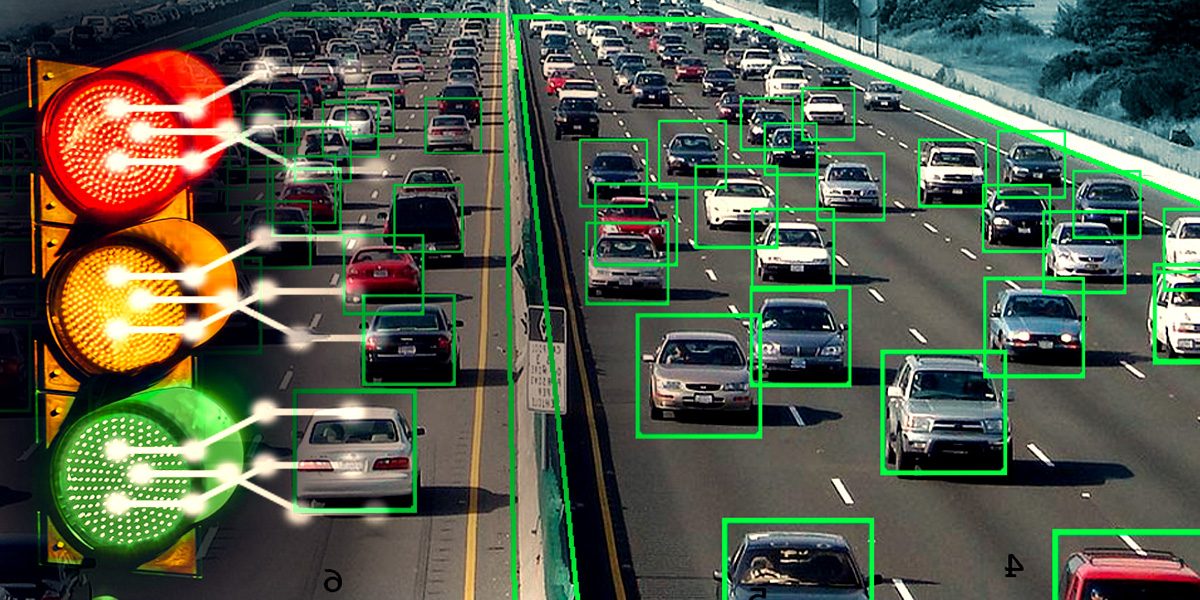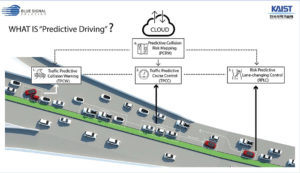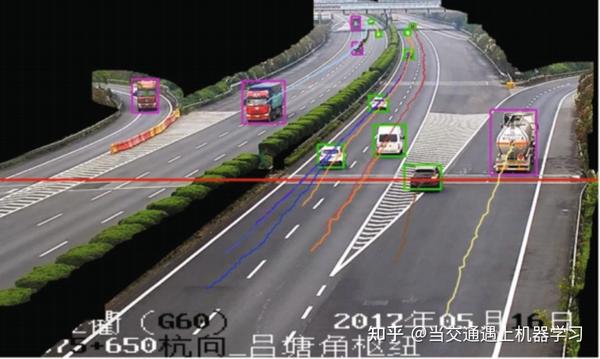The Role of Artificial Intelligence in eBike Traffic Forecasting
Artificial Intelligence (AI) has emerged as a powerful tool for enhancing transportation efficiency and safety, and its application in eBike traffic prediction is no exception. By leveraging AI technologies, such as machine learning and deep learning, cities and regions can significantly improve their ability to predict and manage eBike traffic patterns. This, in turn, can help reduce traffic congestion, promote sustainable transportation, and ensure the safe movement of eBike users.
AI-driven eBike traffic prediction offers several benefits over traditional forecasting methods. For instance, AI algorithms can process vast amounts of data in real-time, enabling transportation planners and policymakers to make more informed decisions about infrastructure development, traffic management, and public safety. Furthermore, AI models can adapt to changing traffic patterns, ensuring that predictions remain accurate even as eBike usage and urban mobility trends evolve.
How AI Enhances eBike Traffic Prediction Models
Artificial Intelligence (AI) has revolutionized various industries, and transportation is no exception. AI technologies, such as machine learning and deep learning, have significantly improved eBike traffic prediction models, leading to increased accuracy, real-time forecasting, and adaptability to changing traffic patterns. This, in turn, has helped enhance transportation efficiency and safety for eBike users.
AI algorithms, such as recurrent neural networks (RNNs) and long short-term memory (LSTM) networks, are particularly effective in handling time-series data and predicting traffic patterns. These algorithms can analyze historical data, identify patterns, and make predictions about future traffic conditions. RNNs, for instance, are well-suited for processing sequential data, making them ideal for analyzing traffic data that is often time-dependent.
LSTM networks, a type of RNN, can address the vanishing gradient problem that often affects traditional RNNs. LSTM networks use memory cells to store information for extended periods, enabling them to learn long-term dependencies in the data. This makes them particularly effective in predicting traffic patterns, which can be influenced by various factors, such as weather conditions, time of day, and special events.
Convolutional neural networks (CNNs) are another type of AI algorithm that can be used for eBike traffic prediction. CNNs are particularly effective in image recognition tasks, but they can also be used to analyze traffic flow data. By analyzing images of traffic patterns, CNNs can identify patterns and make predictions about future traffic conditions.
In addition to these algorithms, AI-driven eBike traffic prediction models can also incorporate other data sources, such as weather data, event data, and social media data, to improve their accuracy. By analyzing these data sources, AI models can gain a more comprehensive understanding of traffic patterns and make more informed predictions.

Selecting the Right AI Tools for eBike Traffic Prediction
Choosing the appropriate AI tools for eBike traffic prediction is crucial for ensuring accurate and reliable predictions. There are various AI platforms and tools available, each with its unique features, advantages, and limitations. Here are some of the most popular options:
- TensorFlow: An open-source platform developed by Google, TensorFlow is a powerful tool for building and training machine learning models. It offers a wide range of features, including support for recurrent neural networks (RNNs) and long short-term memory (LSTM) networks, which are particularly effective for handling time-series data and predicting traffic patterns.
- Keras: A high-level neural networks API, Keras is designed to enable fast experimentation with deep learning models. It can run on top of TensorFlow, Theano, or CNTK and supports a wide range of neural network architectures, including RNNs and LSTMs.
- PyTorch: Developed by Facebook’s artificial-intelligence research group, PyTorch is a popular open-source machine learning library. It offers a dynamic computational graph, which makes it easier to build and train complex deep learning models, including RNNs and LSTMs.
- Microsoft Azure Machine Learning: A cloud-based platform for building, training, and deploying machine learning models, Azure Machine Learning offers a wide range of features, including support for time-series forecasting and automated machine learning. It also offers integration with other Microsoft tools, such as Power BI and Excel, making it easier to visualize and analyze traffic data.
- IBM Watson Studio: A cloud-based platform for data scientists and engineers, IBM Watson Studio offers a wide range of features for building and training machine learning models, including support for time-series forecasting and automated machine learning. It also offers integration with other IBM tools, such as IBM Cloud and IBM Power Systems, making it easier to deploy and manage machine learning models.
When selecting the right AI tools for eBike traffic prediction, there are several factors to consider, including ease of integration, scalability, and cost-effectiveness. For instance, open-source platforms like TensorFlow and Keras offer a wide range of features and flexibility, but may require more technical expertise to set up and maintain. On the other hand, cloud-based platforms like Azure Machine Learning and IBM Watson Studio offer a more user-friendly experience, but may come with higher costs and limitations in terms of customization.
Real-World Applications of AI-Powered eBike Traffic Prediction
AI for eBike traffic prediction is already being used in various real-world applications, improving transportation efficiency and safety. Here are some examples of successful implementations:
- Barcelona: The city of Barcelona has implemented an AI-powered eBike traffic prediction system to optimize its bike-sharing program. The system uses machine learning algorithms to predict bike demand and supply, enabling the city to redistribute bikes more efficiently and reduce the number of empty docking stations. This has led to increased user satisfaction and a more sustainable transportation system.
- Amsterdam: The Dutch city of Amsterdam has implemented an AI-powered eBike traffic prediction system to manage the growing number of eBikes on its streets. The system uses deep learning algorithms to predict eBike traffic patterns and optimize traffic light timings, reducing congestion and improving traffic flow. This has led to shorter travel times and reduced emissions, contributing to a more sustainable and livable city.
- Hangzhou: The Chinese city of Hangzhou has implemented an AI-powered eBike traffic prediction system to manage its large and rapidly growing eBike fleet. The system uses machine learning algorithms to predict eBike usage patterns and optimize charging infrastructure, reducing downtime and increasing availability. This has led to increased user satisfaction and a more efficient and sustainable transportation system.
These case studies demonstrate the potential of AI for eBike traffic prediction to transform urban mobility. By accurately predicting traffic patterns and optimizing transportation systems, cities can reduce congestion, improve safety, and promote sustainable transportation. However, successful implementation requires careful planning, data management, and collaboration between various stakeholders, including transportation planners, policymakers, and eBike manufacturers.

Implementing AI for eBike Traffic Prediction: Best Practices
Implementing AI-powered eBike traffic prediction systems requires careful planning and execution. Here are some best practices to ensure the successful implementation of these systems:
- Data Collection and Preprocessing: The accuracy of eBike traffic predictions depends on the quality and quantity of data. Collect data from various sources, such as GPS sensors, weather data, and traffic cameras, to ensure comprehensive coverage. Preprocess the data to remove noise, fill in missing values, and standardize formats. This step is crucial for ensuring that the data is suitable for machine learning algorithms.
- Model Training and Validation: Train machine learning models using a combination of historical and real-time data. Use techniques such as cross-validation and hyperparameter tuning to optimize model performance. Validate the model using a separate dataset to ensure that it can accurately predict eBike traffic patterns.
- Performance Evaluation Metrics: Use metrics such as mean absolute error (MAE), root mean squared error (RMSE), and coefficient of determination (R-squared) to evaluate the performance of the model. These metrics provide insights into the accuracy and reliability of the predictions, enabling transportation planners and policymakers to make informed decisions.
- Continuous Monitoring and Improvement: Continuously monitor the performance of the AI-powered eBike traffic prediction system and make improvements as needed. This may involve updating the model with new data, adjusting hyperparameters, or implementing new algorithms. Regularly evaluate the system’s performance using the aforementioned metrics to ensure that it remains accurate and reliable over time.
By following these best practices, transportation planners, policymakers, and eBike manufacturers can ensure the successful implementation of AI-powered eBike traffic prediction systems. These systems have the potential to transform urban mobility, reducing traffic congestion, improving safety, and promoting sustainable transportation.
Overcoming Challenges in AI-Driven eBike Traffic Prediction
Implementing AI-driven eBike traffic prediction systems can be a complex process, with several challenges that need to be addressed. Here are some practical solutions and recommendations for overcoming these challenges:
- Data Quality Issues: Data quality is crucial for accurate eBike traffic predictions. To address data quality issues, implement data cleaning and preprocessing techniques to remove noise, fill in missing values, and standardize formats. Regularly monitor data quality and establish data governance policies to ensure that data is accurate, complete, and up-to-date.
- Model Bias: Model bias can occur when the training data is not representative of the entire population. To address model bias, ensure that the training data is diverse and inclusive, representing different demographics, geographies, and traffic patterns. Implement techniques such as fairness constraints and model explainability to identify and mitigate model bias.
- Regulatory Compliance: AI-driven eBike traffic prediction systems must comply with relevant regulations and data privacy laws. To ensure regulatory compliance, work closely with legal experts and regulatory bodies to understand the requirements and implement appropriate measures. Implement data anonymization and encryption techniques to protect user data and ensure privacy.
By addressing these challenges, transportation planners, policymakers, and eBike manufacturers can ensure the successful implementation of AI-powered eBike traffic prediction systems. These systems have the potential to transform urban mobility, reducing traffic congestion, improving safety, and promoting sustainable transportation.

The Future of AI in eBike Traffic Prediction
As AI technologies continue to advance, eBike traffic prediction systems are expected to become even more accurate, efficient, and accessible. Here are some emerging trends and future developments in AI-driven eBike traffic prediction:
- Edge Computing: Edge computing enables AI algorithms to run on devices located at the edge of the network, closer to the source of data. By processing data locally, edge computing can reduce latency, improve response times, and enhance the accuracy of eBike traffic predictions. For instance, eBike manufacturers can integrate edge computing capabilities into eBike sensors to analyze traffic patterns in real-time and provide riders with personalized route recommendations.
- Federated Learning: Federated learning enables AI models to be trained on decentralized data, without sharing sensitive information. By using federated learning, eBike traffic prediction systems can leverage data from multiple sources, such as eBike sensors, mobile devices, and transportation infrastructure, to improve the accuracy of traffic predictions. Moreover, federated learning can help address data privacy concerns and regulatory compliance issues, making it an attractive solution for eBike traffic prediction.
- Explainable AI: Explainable AI enables AI models to be transparent and interpretable, providing insights into how decisions are made. By using explainable AI, eBike traffic prediction systems can build trust with riders and stakeholders, ensuring that decisions are made fairly and ethically. Moreover, explainable AI can help address model bias and ensure that traffic predictions are accurate and unbiased.
By leveraging these emerging trends and future developments, transportation planners, policymakers, and eBike manufacturers can create more intelligent, sustainable, and equitable transportation systems. By embracing the AI-driven eBike traffic prediction revolution, we can transform urban mobility, reduce traffic congestion, and promote sustainable transportation.

Preparing for the AI-Driven eBike Traffic Prediction Revolution
As AI technologies continue to advance, the transportation industry is on the brink of a revolution. AI-driven eBike traffic prediction systems have the potential to transform urban mobility, reduce traffic congestion, and promote sustainable transportation. To leverage these technologies effectively, transportation planners, policymakers, and eBike manufacturers must take proactive steps to prepare for the AI-driven eBike traffic prediction revolution.
- Invest in AI Education: To stay ahead of the curve, it’s essential to invest in AI education and training. By learning about the latest AI technologies, tools, and techniques, transportation professionals can make informed decisions about implementing AI-powered eBike traffic prediction systems. Moreover, by fostering a culture of continuous learning, organizations can attract and retain top talent, ensuring long-term success.
- Collaborate with AI Experts: Collaboration is key to success in the AI era. By partnering with AI experts, transportation professionals can leverage their knowledge and expertise to develop and implement AI-powered eBike traffic prediction systems. Whether it’s working with AI researchers, consultants, or vendors, collaboration can help organizations overcome common challenges and achieve their goals.
- Prioritize Data Quality: Data quality is critical to the success of AI-powered eBike traffic prediction systems. By prioritizing data quality, transportation professionals can ensure that their models are accurate, reliable, and unbiased. Whether it’s collecting data from sensors, mobile devices, or transportation infrastructure, data quality should be a top priority.
- Address Data Privacy and Security: Data privacy and security are essential considerations in the AI era. By addressing data privacy and security concerns, transportation professionals can build trust with riders and stakeholders, ensuring that AI-powered eBike traffic prediction systems are transparent, ethical, and compliant with regulations.
- Embrace Innovation: Finally, embracing innovation is crucial to success in the AI era. By staying up-to-date with the latest trends and developments in AI technologies, transportation professionals can create more intelligent, sustainable, and equitable transportation systems. Whether it’s exploring the potential of edge computing, federated learning, or explainable AI, innovation can help organizations stay ahead of the curve and achieve their goals.
In conclusion, the AI-driven eBike traffic prediction revolution is here. By investing in AI education, collaborating with AI experts, prioritizing data quality, addressing data privacy and security concerns, and embracing innovation, transportation planners, policymakers, and eBike manufacturers can leverage these technologies to improve urban mobility, reduce traffic congestion, and promote sustainable transportation. By taking proactive steps to prepare for the AI-driven eBike traffic prediction revolution, organizations can create a better future for riders, communities, and the planet.


